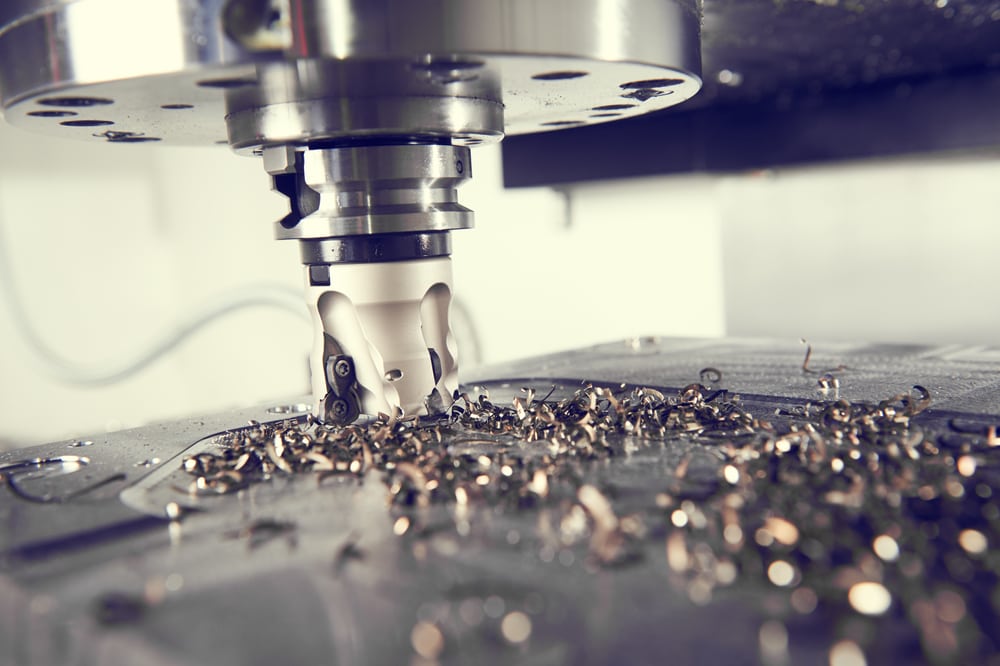Turning and milling are two types of machining processes that remove excess material from a workpiece to change it into a specific shape or part. Computerized numerical control (CNC) machinery can control both turning and milling tasks, or they can be manual operations. While both have common uses in a wide variety of machining projects, the difference between CNC turning and milling is that they use different techniques to shape the product. Learn more about the similarities and differences between turning and milling methods as well as the advantages of both CNC and manual options.

What is Turning? How Does the Turning Process Work?
In turning processes, the cutting tool holds in a fixed position, and the workpiece is attached to a rotating, mobile spindle. The workpiece moves relative to the cutting tool to cut precision strokes in the workpiece. Because the piece is rotating throughout the cutting process, the cuts themselves are generally identical across the entire circumference of the workpiece relative to the axis of the rotation. The machinery determines the RPM, or the speed at which the workpiece rotates, and the stationary arm can hold lathes and cutting tools of various shapes and materials depending on the demands of the design.
Advantages of Turning
Some of the key advantages of turning include:
- Speed. Turning processes can be faster than other CNC alternatives, making production runs more efficient and cost-effective.
- Control. Turning commonly creates very small components as well as cylindrical parts because the process allows for more minute control of the workpiece.
What is Milling? How Does the Milling Process Work?
Milling processes are similar to turning, but they use a nearly reversed set of operations. Rather than having a stationary tool and a rotating workpiece, milling uses a rotating tool up against an immobile workpiece. The cutting tool is fixed to a spindle, which can move across multiple axes around the workpiece to cut it from virtually any angle. Milling tools can have multiple different surfaces and come in various shapes to best form the workpiece based on the design specifications.
Advantages of Milling
Some of the key advantages of milling include:
- Size and shape options. This process is ideal for large, flat, or square-shaped components.
- Versatility. Milling can create products with more diverse shapes and features. It can also provide more complex parts.
CNC Machining vs. Manual Machining
Not only are there different machining processes available based on the needs of your product design, but you can also choose whether those cutting operations are automated CNC processes or manually completed by an operator. Each option provides distinct advantages.
CNC Machining
CNC machines use computer-aided design (CAD) technology to translate design files into a set of instructions the machinery can follow step by step to complete the product. Because the process is handled almost entirely by machines, the parts are highly precise and uniform, even in high-volume orders. There is also minimal intervention from human operators, reducing labor costs, safety hazards, and the risk of human error.
Manual Machining
Manual processes are fast and cost-effective for small orders. The production team doesn’t need to have programming experience to translate the designs or encode the turning or milling process. Instead, however, manual machining relies on skilled experts to manage the procedure, adding specific workforce requirements for team members. Also, there is a risk of human error even with the most skilled laborers.
Turning and Milling at Integrated Solutions (ISI)
At Integrated Solutions Co., we specialize in creating high-quality milled and turned components. Our CNC and manual milling tools are suited to both metals and plastics to create a wide range of product options for the aerospace, architectural, and electronics industries, among others. Product quality is our top priority. We have a team of skilled machinists and programmers who can build your products to your exact specifications to ensure you have reliable parts within your budget. We also have local contacts within our service areas to ensure the success of each project.
Contact us today to learn more about our milling and turning capabilities or request a quote for pricing details.

